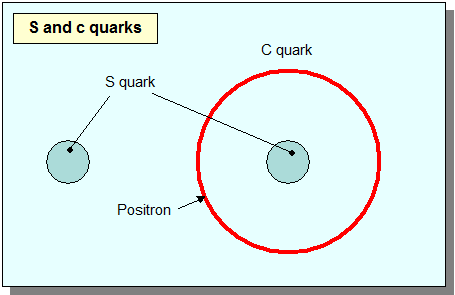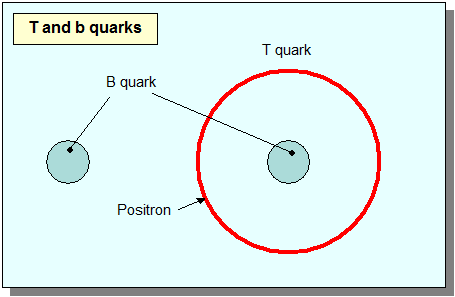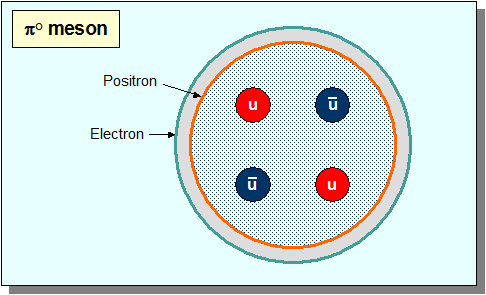Quarks - Mesons
This page covers the other quarks and mesons in accordance with the Wave Model. However, this page contains only suggestions which are not verified to date. Therefore this information must be taken with care.
Quarks - MesonsPart 3
Spacetime Model |
Quarks - MesonsThis page covers the other quarks and mesons in accordance with the Wave Model. However, this page contains only suggestions which are not verified to date. Therefore this information must be taken with care. C and s quarksIt seems that the charmed quark would rise from the strange quark. In the Wave Model here described, a positron surrounds the s quark. SCells, which are enclosed between the positron and the s quark, explain the difference of closed volumes, i.e. mass.  T and b quarksAs we know, the t quark mass is huge, 178,000 MeV. This does not mean, however, that it contains a great number of components. Since it is a closed volume, few electrons and positrons are sufficient to make a t quark having such a huge closed volume (i.e. mass). Inside this quark, we would probably find that 99,99999% is made up of sCells. The t quark has a volume that is hermetic to spacetime. This volume is a "closed volume" which gets mass.  p0 mesonThe p0 meson is made up with four quarks: u, anti u, d, and anti d quarks. However, all physicists do not agree on this configuration; some papers indicate different schemes. This is normal since particles are made of spacetime (see Part 2). Spacetime vibrations, i.e. gammas, decay in various particles or associations of basic particles. The electron and the positron come from the d and anti d quarks. These two particles maintain the four quarks locked inside the meson and act as the strong nuclear force. Please note that the electron and the positron can be swapped. Other configurations are also possible.  p0 meson vs. ProtonThe four quarks introduce attractive and repulsive forces (figure A). In the proton and the neutron, the three u quarks produce exclusively repulsive forces (figure B). This is why the closed volume, i.e. the mass, of the proton (938 MeV) or neutron (939 MeV) is greater than that of the p0 meson (135 MeV), although this last contains an additional quark.  Decay of the p mesonAssuming the above figure right, the stability of the quarks is broken during an interaction.
The two pairs of quarks mutually annihilate.
The electron and positron that surround quarks to make the strong nuclear force are also destroyed.
There remains only the electron or the positron from the external layer of charged
p meson.
This internal annihilation is possible because the u-anti u pairs are very close to each other. The interaction is immediate and internal and, therefore, invisible to the experimenter. It is possible that such invisible interactions are more frequent than we would think. This scheme is in perfect accordance with experimentation that gives:
The remaining electron or positron has a volume close to that of the p meson. This scheme suggests a muon (105 MeV) as a result. This is exactly what the experimentation indicates, with a G/Gtotal of 99.9877% (statistics from LBL). Note: The principle of the Wave Model and the associated figures are generic and may be adapted to other particles. |